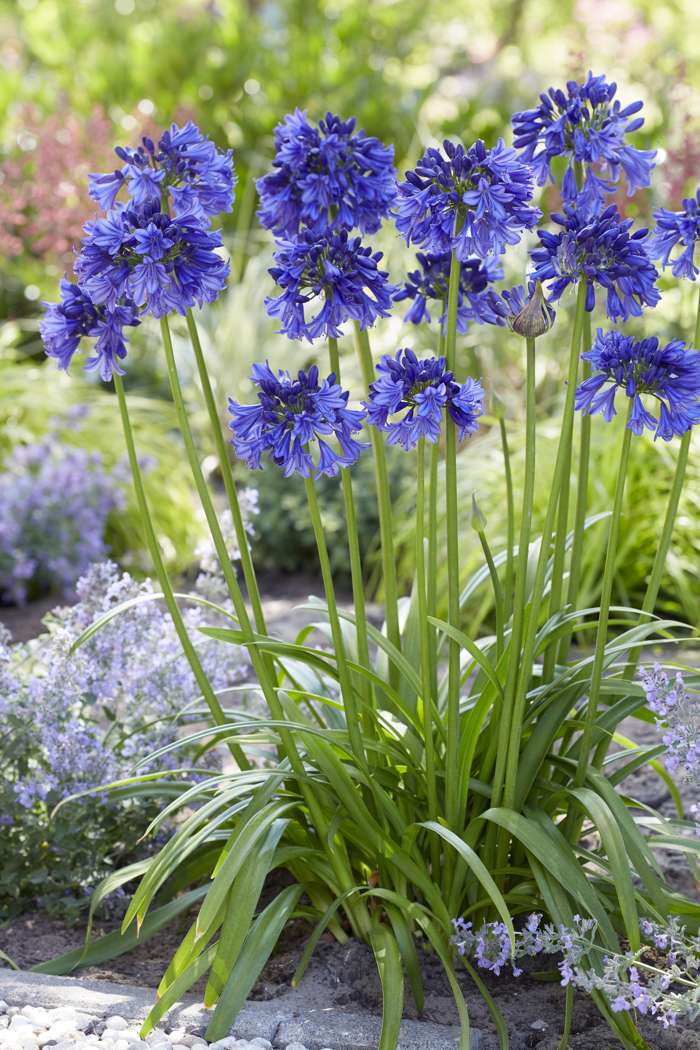Understanding the Art of Agapanthus Treatment: Vital Actions for Healthy And Balanced Development and Dynamic Flowers
In the world of cultivation, the growing of agapanthus stands as a rewarding venture for those who look for to support these stylish blooming plants. With their striking blooms and graceful foliage, agapanthus has actually recorded the attention of garden enthusiasts worldwide. However, achieving optimal growth and vivid blooms requires a nuanced method that incorporates different vital steps. From selecting the appropriate variety to mastering pruning strategies, the trip in the direction of cultivating flourishing agapanthus plants is complex and holds the vital to opening the full capacity of these agricultural gems.

Selecting the Right Agapanthus Variety

When choosing the appropriate Agapanthus selection for your garden, take into consideration variables such as climate viability, flower shade, and development practice. Additionally, take into consideration the climate in your region to make certain the Agapanthus selection you select can prosper in your certain conditions. Recognizing the growth habit of different Agapanthus selections is important for appropriate positioning within your garden.
Perfect Planting Problems
Taking into consideration the optimal ecological requirements is necessary for successful Agapanthus growing. Agapanthus plants are delicate to chilly temperature levels and ought to be safeguarded from frost during winter season months.
To make certain healthy and balanced growth and vibrant blooms, plant Agapanthus bulbs at a deepness of regarding 2-4 inches and space them 8-12 inches apart. Mulching around the base of the plants helps preserve wetness and subdues weed growth.
Watering and Fertilizing Tips
Maintaining proper moisture degrees and offering essential nutrients are crucial components in the treatment routine for Agapanthus plants. When it comes to watering Agapanthus, it is critical to strike a balance. These plants favor constantly damp dirt but are prone to root rot if overwatered.
Feeding Agapanthus is necessary for promoting healthy development and respected blossoms. Apply a well balanced fertilizer, such as a 10-10-10 formula, in the very early springtime as brand-new growth emerges. By complying with these watering and feeding pointers, you can guarantee your Agapanthus plants flourish and generate dynamic, lasting flowers.
Trimming Methods for Agapanthus
Pruning Agapanthus plants at the proper times and with proper strategies is vital for maintaining their health and web link wellness and advertising optimal growth and flowering. The excellent time to trim Agapanthus is in late winter months or early springtime before brand-new growth emerges. Start by eliminating any kind of yellowing or dead fallen leaves near the base of the plant. Cut them as short as possible without damaging the arising shoots.
Deadheading spent blossoms can additionally reroute the plant's energy right into producing more blossoms rather than setting seeds. If you want to collect seeds for breeding, leave some blossoms to fully grown and dry on the plant.
Remember to utilize clean, sharp tools to make exact cuts and minimize the risk of introducing conditions. Agapanthus. Regular pruning will help maintain your Agapanthus looking healthy and neat while ensuring a bountiful screen of beautiful flowers
Taking Care Of Usual Pests and Conditions
After making sure proper trimming techniques for Agapanthus, it is essential to address usual pests and conditions that can impact the health and wellness and vitality of helpful hints these plants. One usual pest that impacts Agapanthus is the Agapanthus gall midge.
Another typical problem is fungal leaf place, which offers as dark lesions on the fallen leaves. To stop fungal illness, guarantee good air blood circulation around the plants, stay clear of overhanging watering, and get rid of any type of infected leaves immediately. In addition, Agapanthus plants can experience origin rot if they are planted in inadequately draining dirt. To stop this, plant Agapanthus in well-draining dirt and avoid overwatering. By being vigilant and taking timely activity versus illness and insects, you can help your Agapanthus plants thrive and create lively flowers.

Final Thought
To conclude, mastering the art of agapanthus treatment entails picking the right range, giving optimal planting conditions, correct watering and feeding, ideal pruning techniques, and addressing usual insects and illness. By adhering to these important actions, you can make certain healthy development and dynamic flowers for more your agapanthus plants. Keep in mind to frequently monitor and maintain your plants to advertise their general wellness and durability.
To ensure healthy development and lively flowers, plant Agapanthus light bulbs at a deepness of concerning 2-4 inches and area them 8-12 inches apart. By adhering to these watering and feeding tips, you can guarantee your Agapanthus plants grow and create vibrant, durable blooms.
One typical pest that affects Agapanthus is the Agapanthus gall midget. Furthermore, Agapanthus plants can experience from root rot if they are planted in poorly draining pipes soil. By following these essential steps, you can ensure healthy growth and dynamic flowers for your agapanthus plants.
Comments on “Agapanthus Proliferation: Tips for Expanding Your Plant Collection”